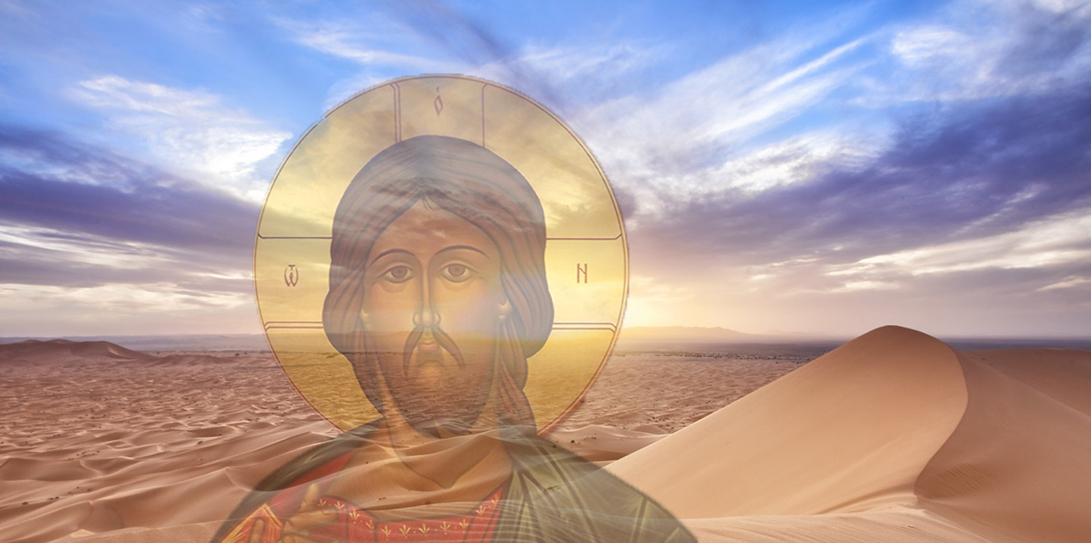
Why do we Fast during Lent?
Lord, who through-out these forty days
For us didst fast and pray,
Teach us with thee to mourn our sins
And close by thee to stay.
Claudia Frances Hernaman (1838-1898)
The Hymnal 1982
In the Ash Wednesday service, The Book of Common Prayer, 1979, tells us that it became the custom of the Church to prepare for our Lord’s passion (Good Friday) and resurrection (Easter) by a season of penitence and fasting. During this season, converts to the faith were prepared for Holy Baptism, and those who had been separated from the body of the faithful were restored to the fellowship of the Church through penitence and forgiveness.
There are many examples in both the Old and New Testaments of fasting, penitence and prayer. Most notable are the passages of Moses receiving the law on Mt. Sinai and of Jesus being led up by the Spirit into the Wilderness to be tempted by the devil.
The book of Exodus informs us that a cloud covered Mt. Sinai, and Moses entered the midst of the mountain. He stayed there with the Lord 40 days and 40 nights, and during this time he did not eat bread or drink water. During this time he wrote on the tablets of stone the words of the covenant, the Ten Commandments.
Likewise, the Gospel of St. Matthew tells us that Jesus was led up the mountain by the Spirit. He fasted 40 days and 40 nights, and when he had become hungry, the devil came to him and said, “If you are the Son of God, command these stones to become bread.” Jesus replied: “It is written, ‘Man shall not live on bread alone, but on every word that proceeds out of the mouth of God.’”
And so, during the 40 days of Lent we imitate the actions of Jesus and the prophet Moses by fasting and abstaining in various ways that we select of our individual choosing. Customarily we fast or abstain from eating various foods, or from engaging in various activities, that we are inclined to indulge in to excess. The purpose of this discipline is to tame our body so that we can concentrate on higher things, particularly the ultimate sacrifice Christ made for all of us on Good Friday, and the Easter Resurrection by which He conquered death for all the baptized so that we might have eternal life.
In so focusing on higher things, our Lenten fast is usually practiced in conjunction with prayer, almsgiving and charity. All of these actions are designed to strengthen the spiritual life by weakening the attractions of earthly and bodily pleasures, so that we may, in the words given to us in the Ash Wednesday service, “be pure and holy, so that at the last we may come to his eternal joy.”
It’s worth noting that modern Christians don’t define “fast” as rigidly as did Moses and Jesus. Roman Catholics define it as reducing the amount of food eaten to one meal a day, with two smaller meals that if added together would not exceed the main meal in quantity. Roman Catholics are required to fast on Ash Wednesday and Good Friday and encouraged to do so on other days; they also are required to abstain from eating meat on Fridays year-round in honor of the Passion of Jesus on Good Friday.
The Book of Common Prayer designates the weekdays of Lent and Holy Week and all Fridays except in the seasons of Christmas and Easter as days of “special devotion” with “special acts of discipline and self-denial,” which normally include fasting.
Roman Catholics are encouraged to impose additional personal penance on themselves at other times. It could be modeled after abstinence and fasting: Some people give up meat or alcohol or other foods or drink for the entirety of Lent.
Read the Ash Wednesday Mass in the Book of Common Prayers, under ‘Proper Liturgies for Special Days.
A Roman perspective: Questions and Answers about Lent and Lenten Practices